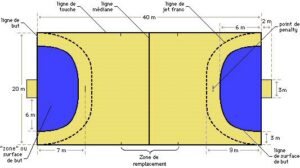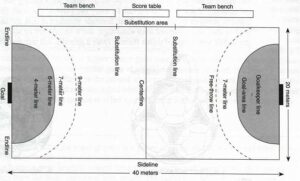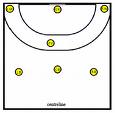FIVB Mini / School Volleyball
 The philosophy behind teaching Mini-Volleyball as an initiation to “regular” Volleyball is derived from the answer to the question “How do we make Volleyball more accessible?”.
The philosophy behind teaching Mini-Volleyball as an initiation to “regular” Volleyball is derived from the answer to the question “How do we make Volleyball more accessible?”.
The simple answer: “By adapting the game and teaching to the youngsters’ abilities, and NOT THE REVERSE”. Thus, both teacher and student have an easier time of it.
A new approach to teaching and playing Volleyball:
* Designed for physical education classes
* Simplified techniques
* Adaptable to facilities
* Focus in on learning through participation
MINI-VOLLEYBALL is a discipline recognised and encouraged by the FIVB. It is THE game for children aged 9-10 up to 12-13 years. The rules are established by each National Federation in order to enable matches between players from different clubs or schools. The “common, necessary” rules reflect the level of Volleyball development in the country concerned.
Mini-Volleyball is played by girls and boys in teams of two to four players, on a court measuring 4.5 to 6 metres in width, 9 to 12 metres in length and divided by a net of 1.9 to 2 metres in height. The objective of play is to send the ball over the net to touch the ground of the opponent’s court whilst preventing the same action of the opposing players.
Play begins with a service and the opposing team has three touches to return it. The team winning the rally scores a point and the right to serve. The same player serves for as long as his/her team wins the rally. A change of server occurs when the other team wins the service, each player taking turns to serve.
A team wins a set when it marks a specific number of points (from 15 to 25). The team wins the match if it wins two sets.
Volleyball at School is a disclipine of education, which involves the cultural and teaching methods of each country.
The teacher uses the various elements of Volleyball in order to stimulate the coordination, learning and social development of children and the group/class. It is founded on games and educational situations that come under the authority of the teacher.
The rules are decided in relation to their educational interest and it is recommended to adapt the courts, nets and balls according to the children’s capabilities.
COURTS: The size of the court and the number of players can vary depending on the available space. It is recommended to use existing equipment, such as badminton layouts and posts.
BallS: The use of lightweight balls, either equal in diameter to or greater than official balls, is recommended as follows:
Mini-Volleyball balls: A ball made of an outer layer and a bladder – 18 panels of synthetic leather, brightly coloured and/or a colour combination. Circumference: 65-68 cm; weight: 200-220 grams.
Volleyball at School balls: A lighter ball of composite material (without a bladder) in bright colours. Circumference: 65-68 cm; weight: 180-200 grams.










